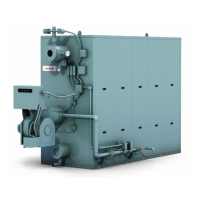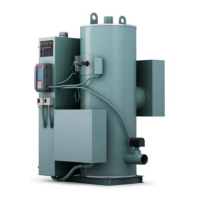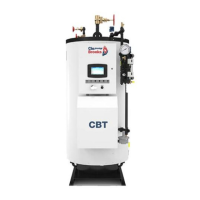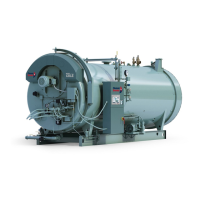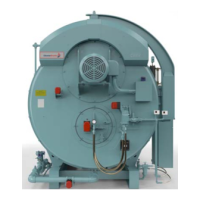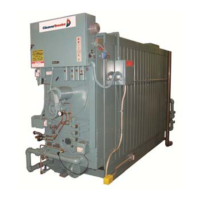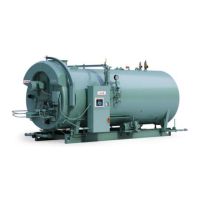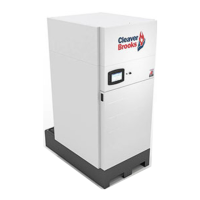Chapter 5 Adjustment Procedures
5-2 750-177
2. Initial adjustment should be made with the motor in full
closed position, that is with the shaft on the power end of
the motor in its most counterclockwise position.
3. The closer the linkage rod connector is to the drive shaft,
the less the arm will travel; the closer the connector is to
the driven shaft, the farther that arm will travel.
. Prior to initially firing a boiler it is advisable to check for
free movement of the linkage. The damper motor must be
allowed to complete its full stroke and the damper must move
freely from low to high fire position.
C. MODULATING MOTOR
The modulating motor has a 90° shaft rotation. The motor
manufacturer also provides a 160° stroke model for other
applications. If a replacement is obtained from someone other
than a Cleaver-Brooks Service or Parts representative, it may
have an incorrect stroke. To prevent damage, verify the 90°
stroke prior to installing a replacement.
The stroke may be determined by powering the motor and
connecting terminals R-B to actually determine the stroke as
motor drives to an open position.
D. MODULATING MOTOR SWITCHES
- LOW FIRE AND HIGH FIRE
The modulating motor contains either one or two internal
switches depending upon application. The microswitches are
actuated by adjustable cams attached to the motor shaft.
Factory replacement motors have the cams preset. The low
fire start switch is set to make the red and yellow leads at
approximately 8° on motor closing. The high fire purge air
proving switch (located in the modulating motor) is set to
make red and blue tracer leads at approximately 60° the on
motor opening. Normally the settings are left as is, but job
conditions may require readjustment. If the cams require
adjustment or resetting, follow the instructions in the
manufacturer’s technical manual.
E. BURNER OPERATING CONTROLS
- GENERAL
Note: Adjustments to the boiler operating
controls should be made by an authorized
Cleaver-Brooks Service Technician. Refer to
the appropriate boiler Operation and
Maintenance manual for specific
information on boiler startup and operation.
The standard boiler operating control package consists of
three separate controls, the High Limit Control
, Operating
Limit Control and the Modulating control.
The High Limit Control
senses the hot water temperature or
steam pressure. It is used as a safety limit to turn the burner
off in the event the operating limit control fails. The high limit
control should be set sufficiently above the operating limit
control to avoid nuisance shutdowns.
The Operating Limit Control
senses temperature or pressure
and automatically turns the burner on to initiate the start-up
sequence when required and turns the burner off to initiate the
shutdown sequence when the demand is satisfied. The control
must be set to initiate startup only at the low fire position.
The Modulating Control
senses changes in the hot water
temperature or steam pressure and signals the modulating
motor to control the flow of fuel and air to the burner. With
either steam or hot water boilers, the modulating control must
be set to ensure the burner is at its minimum low fire position
before the operating limit control either starts or stops the
burner.
When adjusting or setting controls, first be sure all control
devices are securely mounted and level. With the temperature
sensing control, make sure the sensing bulb is properly
bottomed in its well and is secured against movement. Be
sure the connecting tubing is not kinked.
The dial settings are generally accurate; although it is not
unusual to have a slight variation between a scale setting and
an actual pressure gauge or thermometer reading. Always
adjust control setting to agree with pressure gauge or
thermometer readings. Accurate instrument readings are
required. When necessary use auxiliary test equipment to set
controls.
Burner controls correctly set to match load demands will
provide operational advantages and achieve the following
desirable objectives:
• The burner will be operating in low fire position prior to
shut down.
• The burner will operate at low fire for a brief period on
each start during normal operation.
• Eliminates frequent burner on-off cycling.
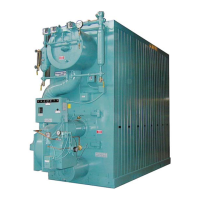
